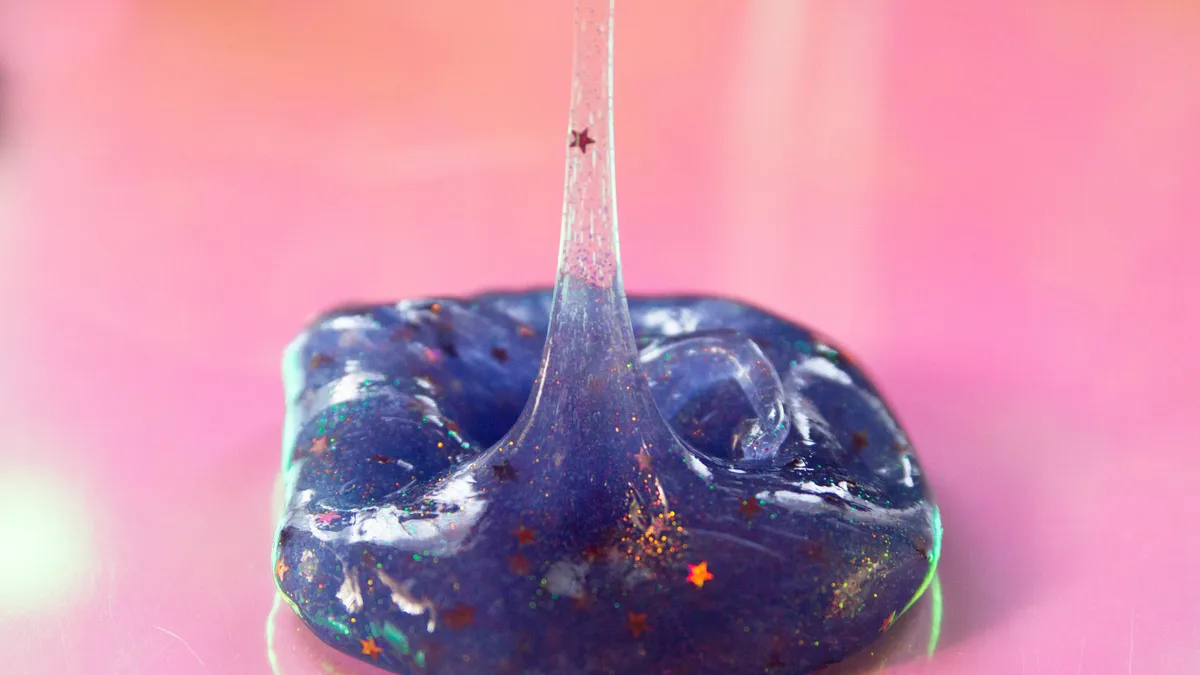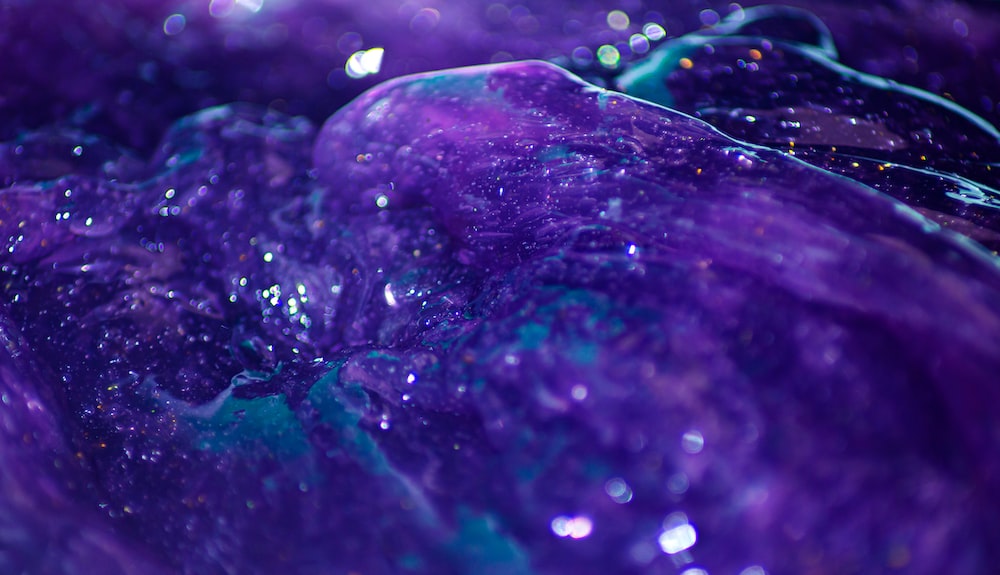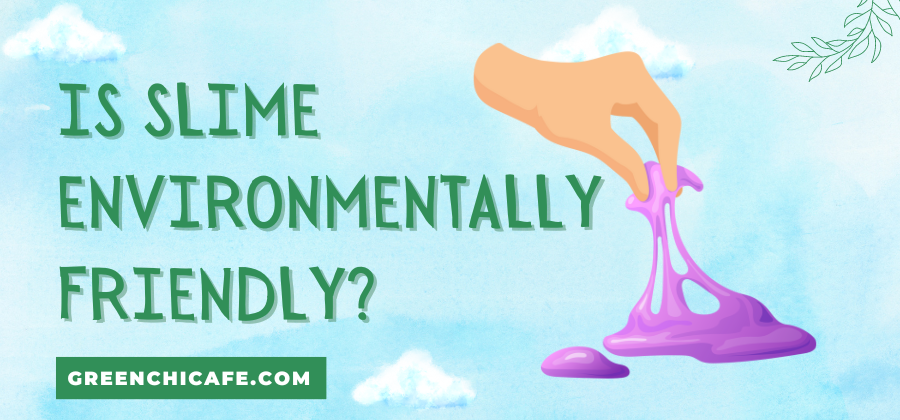Last Updated on June 3, 2024 by Annie Baldwin
Slime’s popularity has exploded in recent years, but some worry that making and playing with it may be harmful to the environment.
This article digs into whether slime is eco-friendly or not.
You’ll learn the truth about slime’s environmental impact and how to make earth-conscious choices when crafting.
Is Slime Environmentally Friendly?

It depends. Some slime contains non-biodegradable glue and borax which can pollute water and soil.
But eco-friendly slime recipes use natural ingredients like cornstarch and avoid toxic chemicals, making them safe for kids and the environment.
While traditional slime raises some concerns, it is possible to make earth-friendly slime.
Key Points
- Standard slime recipes contain non-biodegradable glue and borax.
- Eco-friendly slime uses natural ingredients like cornstarch.
- Toxic ingredients can be avoided with creative recipes.
Our Opinion
We believe it’s possible to make fun, safe slime using earth-friendly ingredients.
While some standard slime recipes may be harmful, the environmental impact depends on the specific components.
With biodegradable, non-toxic ingredients, slime can be an engaging activity for kids without negative effects.
We encourage choosing eco-friendly options.
Is Slime Made From Plastic Harmful?

The environmental impact of slime depends on its ingredients. Many classic slime recipes do contain plastic-based glue, which is not biodegradable. However, there are alternatives:
- Opt for corn starch or corn flour instead of glue. These natural starches make slime that’s non-toxic and edible.
- Use PVA glue rather than Elmer’s glue. PVA is biodegradable, so less harmful to the earth.
- Skip the Borax. While not toxic itself, Borax makes slime less biodegradable. Substitute liquid starch or saline solution.
- Choose non-toxic food coloring over synthetic dye. Natural options like beet juice won’t pollute.
- Swap synthetic glitter for biodegradable options like dried flowers. Avoid plastic glitter at all costs.
The bottom line? It’s possible to craft slime that’s fun, safe for kids, and environmentally responsible with the right eco-conscious ingredients. With a few easy substitutions, you can keep those slime sessions going while keeping the planet healthy too.
What Are the Eco-Friendly Ingredients in Slime?
If you want to make earth-friendly slime, look for these sustainable ingredients:
- Flour made from grains like rice, sorghum, or oats creates a smooth, stretchy texture safely. Wheat and other gluten flours work too.
- Liquid starch derived from vegetables thickens slime without toxins. Potato, corn, arrowroot or tapioca starches are all options.
- The saline solution lets you skip the Borax entirely. Just mix salt and water.
- Plant-based coloring from turmeric, spinach, blueberries, or other foods adds vivid hues.
- Natural scents like vanilla, peppermint, or lavender make it smell sweet.
- Biodegradable glitters made from eucalyptus or pine add sparkle that won’t harm the planet.
Getting creative with items from your kitchen is the key to eco-friendly slime. It takes just a few all-natural swaps to make slime that’s as gentle on the earth as it is fun to play with. With the right ingredients, you can feel good about crafting.
Can You Make Homemade Slime Sustainably?
Absolutely! Crafting slime at home is a great way to reduce your environmental impact. Here’s how:
- Shop local. Buy ingredients from farmers’ markets or bulk bins to avoid packaging waste.
- DIY colors and scents. Make your own plant-based dyes and essential oil perfumes.
- Go edible. Use food-grade ingredients like cornstarch and coconut oil so kids can safely play.
- Store in reusable containers, not plastic bags. Glass jars work great.
- Recycle failed batches as compost, not trash. Most homemade slime is biodegradable.
- Share supplies with friends or organize a slime swap. Avoid duplicate purchases.
- Research and select the least toxic borax substitutes, like liquid starch or saline solutions.
With a few easy sustainable swaps, you can craft responsibly. Homemade slime lets you control what goes in it. And when you’re finished playing, it can safely go back into the earth.
Are Glitter and Beads in Slime Bad for the Environment?

Glitter and plastic beads give slime sparkle, but they aren’t the most eco-friendly options. Here’s what to know:
- Glitter is usually made from plastic. It doesn’t biodegrade and contributes to microplastic pollution.
- Plastic beads come from petroleum and can be toxic. They also don’t break down naturally.
- Alternatives like biodegradable glitter and plant-based beads are available. But they’re often pricier.
- Using glitter and beads sparingly reduces impact. Or leave them out completely.
- If you do add them, reuse and recycle as much as possible.
- At-home slime without glitter or beads is safest for the planet. Kids will still have a blast with all the squishy, stretchy fun!
With a few easy tweaks, you can craft sustainable slime that’s gentle on the earth and safe for little hands. Creativity doesn’t have to harm the environment.
How to Dispose of Slime Responsibly
Slime doesn’t last forever. So what’s the best way to toss it when it dries out?
- First, reuse or repurpose if you can. Did it harden? Re-activate with borax solution. Store-bought? Donate unopened containers.
- For slime with glue, let it fully dry out. Then it can go in the trash as solid waste.
- If it contains borax, follow the disposal instructions on the box. Often you can dilute it and pour it down the drain.
- Glitter and beads should be removed and recycled whenever possible.
- Compost any food-based slime made from cornstarch or flour. This avoids sending food waste to landfills.
- Check if your community has slime recycling available. Some accept old slime to repurpose.
With a few extra steps, we can keep slime fun from harming the planet. Reduce what goes to landfills and recycle what you can. Working together, we can craft sustainably.
FAQ
Is Slime Harmful to the Environment?
Some slime recipes contain non-biodegradable ingredients like glue and borax which can be harmful if disposed of improperly. However, there are eco-friendly slime options available.
Is There an Eco-Friendly Slime?
Yes, there are slime recipes that use natural, biodegradable ingredients like cornstarch, guar gum, or aloe vera gel instead of glue and borax. These eco-friendly slimes have less environmental impact.
Conclusion
While traditional slime recipes may use non-biodegradable ingredients, it is possible to make an environmentally friendly slime. By using natural, non-toxic ingredients like cornstarch, aloe vera, or liquid starch instead of borax and glue, slime can be created that is safe for kids and less harmful to the environment. With some creativity, slime can be an eco-friendly, educational STEM activity.
